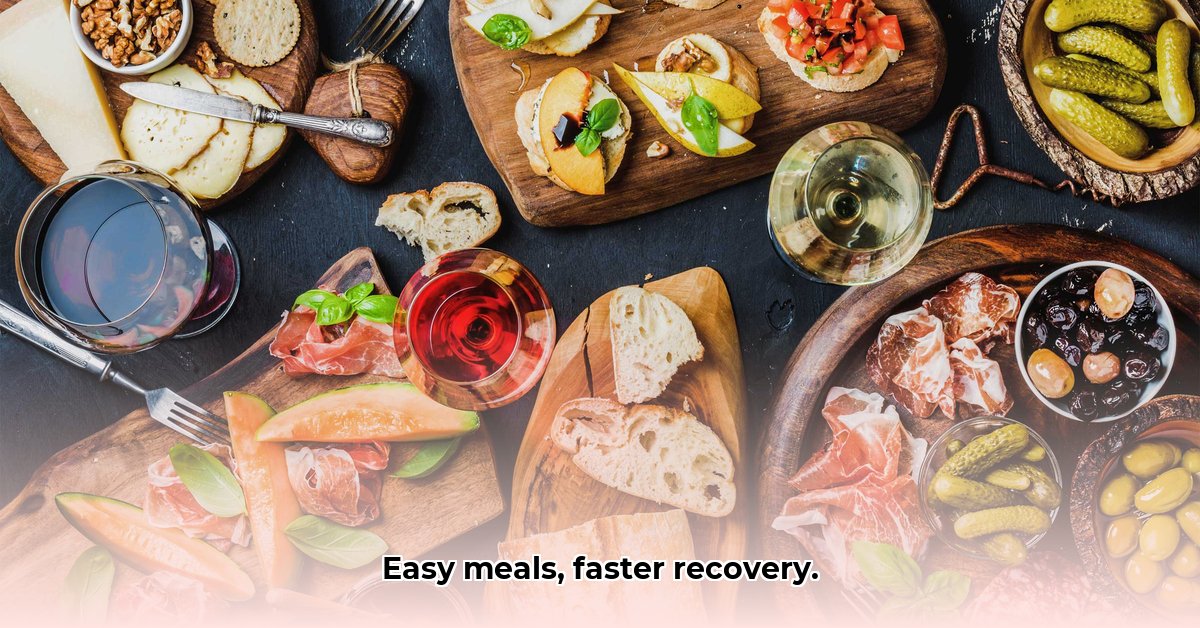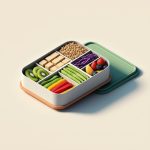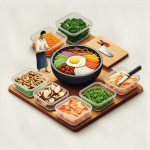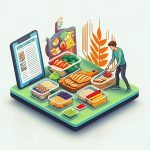Facing surgery and worried about post-operative meals? This guide simplifies your recovery with delicious, easy-to-prepare soft food recipes. Learn how to navigate dietary restrictions with confidence and enjoy nourishing meals that aid healing and boost your strength. Say goodbye to blandness and hello to a smoother, tastier recovery journey. For more ideas on soft foods, check out this list of foods starting with S.
Food for Soft Diets: Making Post-Surgery Recovery Easier and Tastier
Recovering from surgery often means adapting to a soft food diet. But this doesn’t have to be a culinary wasteland! Discover strategies to make this phase enjoyable and less restrictive. We’ll cover making food for soft diets easier, including tips on what to eat and what to avoid.
Understanding Your Personal Needs
Your post-operative diet hinges on the specifics of your surgery and your doctor’s recommendations. While some procedures necessitate a near-liquid diet, others permit softer, easily chewable foods. Adhering to your healthcare provider’s instructions is paramount for a seamless recovery. Forgetting this step can hinder your healing process. Prioritize clear communication with your healthcare team.
Building Blocks of a Soft Food Diet
A soft food diet emphasizes textures that are creamy, smooth, and easy to digest. The objective is to nourish your body without straining your digestive system. Focus on these key nutrients and delicious soft foods to ensure a balanced recovery:
- Protein Power: Essential for tissue repair. Opt for lean meats (ground or shredded), softly cooked eggs, well-cooked and pureed beans (like refried beans or lentil soup), creamy yogurt, cottage cheese, silken tofu, and protein smoothies.
- Healthy Fats: Avocados, olive oil (added to pureed soups or mashed vegetables), soft cheeses, and nut butters (if approved by your doctor) are good sources of sustained energy.
- Complex Carbs: Well-cooked pasta (especially with creamy sauces), mashed sweet potatoes, soft oatmeal, cream of wheat, grits, and mashed white potatoes provide energy.
- Fruits and Veggies: Prioritize steamed and mashed carrots, bananas, applesauce, pureed fruits, canned fruits (in juice, not syrup), and well-cooked and peeled vegetables for essential vitamins and minerals.
Avoid tough, high-fiber, or overly acidic foods initially. Focus on incorporating moist foods to ease swallowing.
A Sample Meal Plan
This is merely a suggestion. Collaborate with your doctor and a registered dietitian to tailor a meal plan to your specific needs. A personalized diet is crucial for a speedy and comfortable recovery.
| Meal | Delicious Options | Important Notes |
|---|---|---|
| Breakfast | Creamy Oatmeal (with nut butter or fruit puree), Scrambled Eggs (very soft, with cheese), Yogurt with Berry Puree, Smoothie | Aim for foods that are easy to swallow and digest. |
| Lunch | Creamy Tomato Soup (with blended cheese), Mashed Sweet Potatoes with Shredded Chicken, Tuna Salad (finely chopped on very soft bread), Lentil Soup | Ensure everything is exceptionally soft and easy to manage. |
| Dinner | Chicken Pot Pie (without the crust, focusing on the pureed vegetables and shredded chicken), Well-cooked Pasta with Creamy Sauce, Shepherd’s Pie (ensure vegetables are soft) | Avoid anything tough to chew. Focus on soft, easily digested ingredients. |
| Snacks | Applesauce, Soft Fruit Purees, Pudding (check ingredients!), Yogurt, Cottage Cheese, Popsicles (sugar-free options) | Choose snacks that are gentle on your stomach and help with hydration. |
Tips for Making Soft Foods Delicious and Enjoyable
- Spice It Up (Carefully): Herbs and spices can significantly enhance flavor without irritating your stomach. Introduce them gradually. Consider ginger, cinnamon, turmeric, or mild curry powder.
- Hydration Heroes: Drink ample fluids to aid digestion and recovery. Water, herbal teas, broth, and sugar-free popsicles are great choices.
- Listen to Your Body: Discomfort signals avoidance. Be patient and don’t force yourself to eat anything that causes pain.
- Get Creative in the Kitchen: Adapt simple recipes. Think creamy soups with pureed veggies, mashed sweet potatoes with cinnamon and a dollop of yogurt, or smoothies with protein powder and fruit.
- Texture Tweaks: Use a blender, food processor, or immersion blender to achieve the desired consistency. Remember, smooth is key.
This diet is temporary, so plan and cook creatively to nourish your body while healing. With intention, your post-surgical recovery can be smoother and tastier than expected, and can even help you to learn new delicious habits.
How to Increase Protein Intake on a Soft Food Diet After Surgery
Protein is vital for tissue repair post-surgery, but a soft food diet can present challenges. Fortunately, many naturally protein-rich soft foods can be easily incorporated. Discover the strategy on how to increase protein intake on a soft food diet after surgery.
Protein Powerhouses: Soft Food Edition
Protein isn’t confined to meat and poultry. Many soft foods are naturally rich in this nutrient, making them ideal for a post-surgery diet. Here are some options:
- Yogurt: Opt for Greek yogurt, which boasts higher protein content compared to regular yogurt. Consider adding honey or fruit puree for flavor.
- Scrambled Eggs: Softly cooked and versatile, eggs can be paired with soft bread or blended into creamy soups for added nutrition.
- Pureed Beans: Lentils, chickpeas, and white beans can be pureed into smooth soups or spreads (like hummus), serving as budget-friendly sources of protein. Refried beans are also a good option.
- Silken Tofu: Silken tofu is perfect for blending into smoothies or using as a base for creamy sauces.
- Cottage Cheese: Enjoyed plain or incorporated into creamy dips or mashed sweet potatoes, cottage cheese offers a versatile protein option.
- Soft Cheeses: Cream cheese, ricotta cheese, and other soft cheeses can add protein and flavor to your diet.
Sneaky Protein Boosters
Sometimes, a little extra help is needed to ensure adequate protein intake. These tips will seamlessly increase protein in your soft food diet:
- Protein Powders: Add a scoop of unflavored or lightly flavored protein powder to smoothies, soups, or mashed potatoes for an easy protein boost without altering the taste significantly.
- Nut Butters: Add spoonfuls of smooth peanut butter, almond butter, or cashew butter to yogurt, oatmeal, or mashed bananas to boost protein and introduce healthy fats and flavor. Ensure your doctor approves of nut consumption post-surgery.
- Fortified Foods: Enhance your intake with protein-fortified cereals, milks, and yogurts.
Staying Hydrated
Remember to drink plenty of fluids to aid digestion and overall recovery. Water is crucial, but broths (chicken, vegetable), herbal teas, and protein shakes are also fantastic choices.
According to the Cleveland Clinic, consuming enough fluids is vital for preventing dehydration and promoting overall well-being during recovery after surgery [1].
Delicious Soft Food Recipes for Gastrointestinal Issues Recovery
Recovering from gastrointestinal (GI) issues requires a gentle approach to eating. Delicious Soft Food Recipes for Gastrointestinal Issues Recovery focuses on easily digestible foods that provide nutrition and satisfaction.
Understanding Your Needs
The texture and consistency of your meals will depend on your specific condition and your doctor’s advice. Whether you’re dealing with post-surgical discomfort or managing chronic digestive problems, a tailored diet is essential.
Building Blocks of a Delicious Soft Food Diet
Focus on creamy, smooth, and easily mashed ingredients for optimal digestibility and nutrient absorption. Here’s a guide:
- Fruits: Applesauce, ripe bananas, well-cooked pears, peaches (canned in juice), and melon (watermelon, cantaloupe).
- Vegetables: Butternut squash soup, mashed sweet potatoes, pureed carrots, well-cooked green beans, and avocado.
- Proteins: Scrambled eggs, well-cooked chicken (shredded or pureed), silken tofu, cottage cheese, and Greek yogurt.
- Grains: Oatmeal (cooked until very soft), cream of wheat, grits, well-cooked pasta (white pasta is often better tolerated), and white rice.
- Dairy: Yogurt (plain, low-fat), milk (if tolerated), and cottage cheese. Consider lactose-free options if dairy is an issue.
Hydration is key—drink plenty of water, clear broths, or herbal teas. Avoid sugary drinks and caffeine, which can irritate the GI tract.
Delicious Recipes for Easy Recovery
Here are a few simple, flavorful recipes to get you started on a soft food diet that aids in healing and comfort.
Creamy Chicken and Vegetable Puree
Ingredients:
- 1 cup cooked chicken breast, shredded
- 1 cup cooked carrots, pureed
- 1/2 cup cooked potatoes, pureed
- 1/4 cup chicken broth
- 1 tablespoon olive oil
- Salt and pepper to taste
Instructions:
- Combine all ingredients in a blender.
- Blend until smooth and creamy.
- Adjust seasoning to your preference.
- Serve warm.
Sweet Potato and Apple Mash
Ingredients:
- 1 large sweet potato, baked and mashed
- 1/2
- Shop Bento Box for Sale To Find Your Ideal Lunch Container - December 6, 2025
- Lunch Box That Fits Bento Box Neatly for Daily Use - December 5, 2025
- Japanese Lunch Bag Does Double Duty as Bento Carrier and Tote - December 4, 2025










